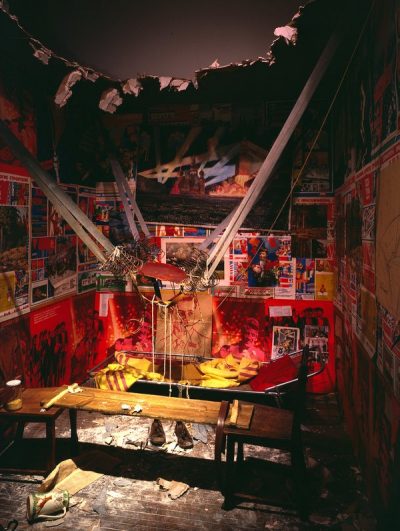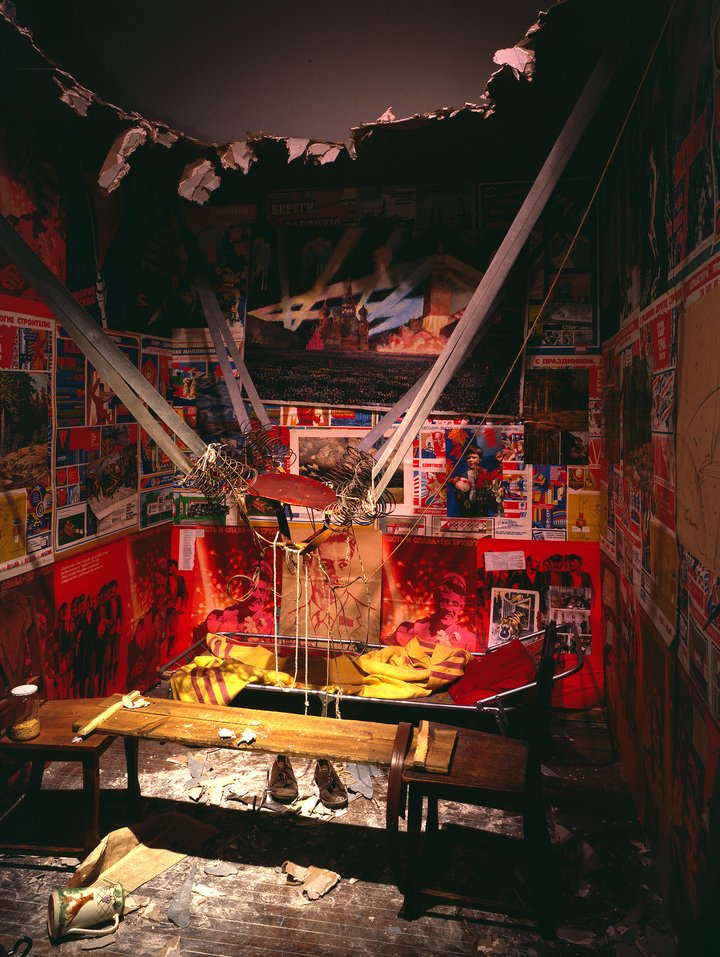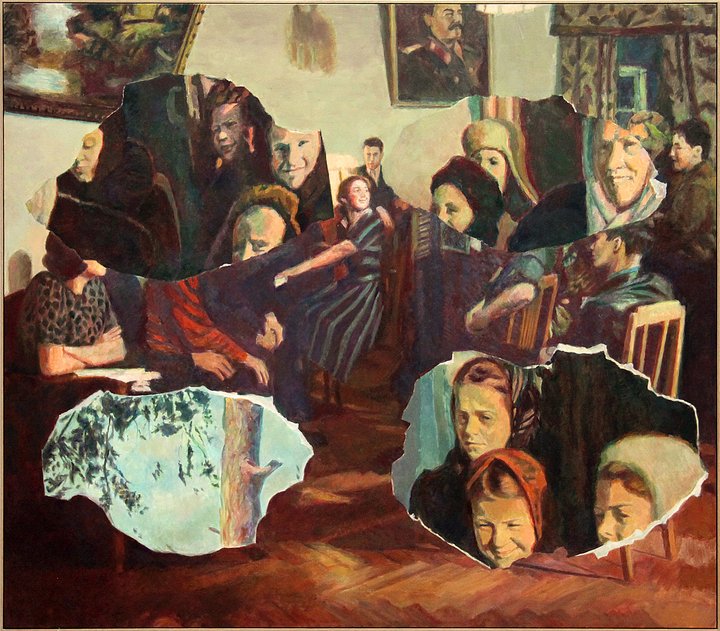Art and Culture: The Oppression of Bleakness. Ilya and Emilia Kababov at London’s Tate Modern

Featured image: Ilya Kabakov The Man Who Flew Into Space From His Apartment 1985 Centre Georges Pompidou, Paris. Musée national d’art moderne/Centre de Création industrielle. Purchase, 1990 (Source: Ilya & Emilia Kabakov)
Installation art deserves its reputation in many quarters as trumped up and pretentious, an exaggeration dressed up as a profound truth. History is ignored, and all is deemed modern and defiant. It also seems, often, to be a terrible misuse of gallery space.
Such accusations are impossible to level at Ilya and Emilia Kabakov, whose exhibition at the Tate Modern Not Everyone Will Be Taken Into The Future crushes its visitors with its vision of bleakness and cruelty that marked the Soviet experiment. In various measures, it also furnishes the viewer with abundant playfulness as it draws out the condition of the unbearably absurd.
Ilya Kabakov, as with others of his ilk, pokes fun at the ideologically approved art programs of the Soviet state, complexes that crush cosmopolitanism and variety. He weaves in a narrative of mocking and teasing into his work. Not being with the socialist realist in-crowd, he is rooting for the common man who has, supposedly, been raised to the level of titans, warriors in a social experiment costing millions of lives and untold suffering. In truth, such a being is merely a guinea pig, an experimental being.
Progress brings with it mounting casualties, plentiful gore. These are written, painted or drawn away, in portrayals of glorious revolutionary fervour, in dispatches of distorting denials and affirmations. The language of Socialist Realism supplies such an alibi, its sheer banality irrepressible in what it doesn’t say.
“We wanted to,” Ilya explains, “analyse the language of Soviet civilisation”.
And what a language, having within it the most glorious sense of constant delusion. Tested! (1981), featuring a condemned woman of the revolution forgiven by the good grace of party officialdom (her party card is officiously returned to her), remains unbearable for its joyful faces, the portraits of falsely benevolent Politburo leaders, the atmospherics of mendacity.
Such complexes inspire the Kabakovs to work on relative perspectives, drawing out unseen, parallel worlds. There is that of the invisible, the small, the midgets, tiny figures who feature in Trousers in the Corner (1989) and I Catch the Little White Men (1990). There are the giants and the subterranean subjects in the modelsWhere is Our Place? (2002/2017) and The Vertical Opera (Guggenheim) (1998/2008).
The installation Not Everyone Will Be Taken Into The Future is deliciously ironic and grim. On the train of history and memory, who will be left behind? Inspired by his essay on Kazimir Malevich by the same name, memories of bright art students being selected to go to the Young Pioneer camp come to mind.
Envisaged by both Ilya and Emilia in 2001, a train at one end of the room is departing with inexorable gloominess. Behind it lie forlorn canvasses, the unchosen, the detritus of forgotten artistry. To be forgotten is not always a case of being less of a talent: it bespeaks to being one not approved of, the outsider always peering into the establishment of power.
For Ilya, the sense of being ignored, forgotten or buried by the approved and the anointed is palpable. It supplies the asphyxiating material of conformity, thereby placing the artist in an untenable situation: to obey, and ingratiate, or to toil in obscurity.
March Chagall, during a visit to Moscow in 1973, had advised a young artist who had posed the question on whether the non-conformist artist should remain in the Soviet Union, clinging to circles that would be ignored, if not condemned, or emigrate. The answer was unequivocal: emigrate. Not so, Ilya, who admitted that he would have remained in the USSR “forever if Perestroika hadn’t come”.
Not all the works at this exhibition are despairing. There is an escape, though such systems can only conjure up exits of the mind. In a piece that heralded Ilya’s pioneering concept of total installation art, The Man Who Flew into Space from His Apartment (1985) envisages an evacuation into the cosmos from drudgery typified by the poor furnishings of a communal Soviet apartment. Soviet life is collaged within the setting, replete with glorious images of the worker’s idyll. There are beaming faces, optimistic glances into the future. The viewer is then greeted by an aperture in the ceiling, an ominous gash suggesting that the occupant, desperate to flee, burst through it.
One such person who could not flee was Ilya’s mother, who features in Labyrinth (My Mother’s Album) (1990). The installation is itself an experiment in promoting the inescapable life: the communal flat with poor lighting, shabby living, heart wrenching bleakness. Pictures taken by Ilya’s uncle, accompanied by text from the memoir of his mother, Bertha Urievna Solodukhina, speak of misery, transient lodgings, indifferent landladies, and a loveless marriage:
“When I think about that world in which my mother’s life passed, what arises in my imagination is a long and semi-dark corridor which is twisted like a labyrinth, where behind each new turn, behind each bend, there is not a bright exit glimmering in the distance, but just the same grubby floor, the same grey, dusty poorly painted walls illuminated by weak, 40-watt light bulbs.”
The effect is so striking it torments viewers, who can only tolerate one stretch of the corridor before hurrying along, cursorily gazing at the photographs and barely mindful of the text. Eyes begin to hurt in the poor light; claustrophobia begins its march. The misery is brilliantly overwhelming.
As irony is a mechanism that, in time, can consume its user, Ilya Kabakov and his official collaborator and wife Emilia now find themselves on the train of history rather than off it. There are not the ones to be abandoned, let alone forgotten. In 2004, he exhibited in the State Hermitage Museum in St. Petersburg. In 2008, he exhibited his installation Gate in a room at the Pushkin State Museum of Fine Arts. From powerlessness, the Kabakovs have come into power, embracing their own form of authorial dictation and authority.
*
Dr. Binoy Kampmark was a Commonwealth Scholar at Selwyn College, Cambridge. He lectures at RMIT University, Melbourne. Email: [email protected]



